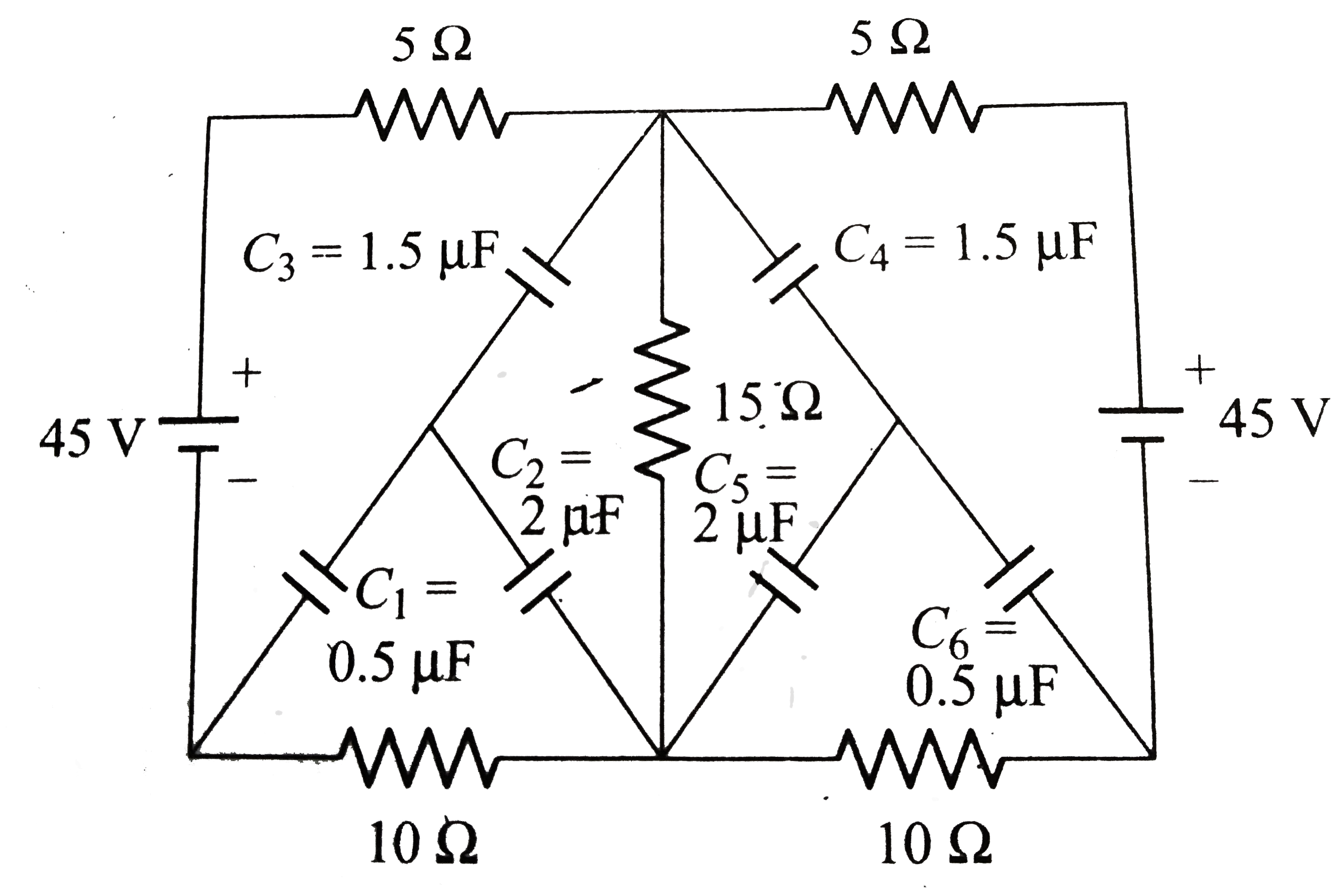In the fig. shown the circuit is in steady state.

If the battery is disconnected give the capacitor charge as a function of time.
A
Q=200e−3t/10
B
Q=200e−3t/1000
C
Q=200e−3t
D
Q=100e−3000t
Video Solution
Text Solution
The correct Answer is:B
q=q0e−t/rq=200μcτ=RC
R is effective resistance across capacitor.
|
Topper's Solved these Questions
- CAPACITANCEBook:NARAYNAChapter:CAPACITANCEExercise:Level-VI
Explore 28 Videos
- CAPACITANCEBook:NARAYNAChapter:CAPACITANCEExercise:Subjective
Explore 9 Videos
- CAPACITANCEBook:NARAYNAChapter:CAPACITANCEExercise:NCERT Based
Explore 13 Videos
- ATOMS Book:NARAYNAChapter:ATOMS Exercise:EXERCISE -4
Explore 47 Videos
- COMMUNICATION SYSTEMBook:NARAYNAChapter:COMMUNICATION SYSTEMExercise:Level-II(H.W)
Explore 25 Videos
Similar Questions
Knowledge Check
In the fig. shown the circuit is in steady state.

what is the potential difference across the capacitor in steady state ?A5 VB10 VC20 VD40 VIn the fig. shown the circuit is in steady state.

How long does it take for the capacitor to discharge until the potential difference across it becomes 1V ?A1766.1μsB333.34μsC1000μsD333.34sThe circuit is in a steady state.

The charge in capacitor C3 isA10μCB30μCC20μCD40μC
The circuit is in a steady state.

The charge in capacitor C1 is
View SolutionThe charge on the capacitor in steady state in the circuit shown is

View SolutionIn the circuit shown in the figure, in steady state:

The current drawn from the battery is
View SolutionIn the circuit shown in the adjacent figure, the batteries are ideal. The charge on the capacitor C is

View SolutionConsider the circuit shwon in fig. The circuit is in steady state.

The charge in capacitor is
View Solution



